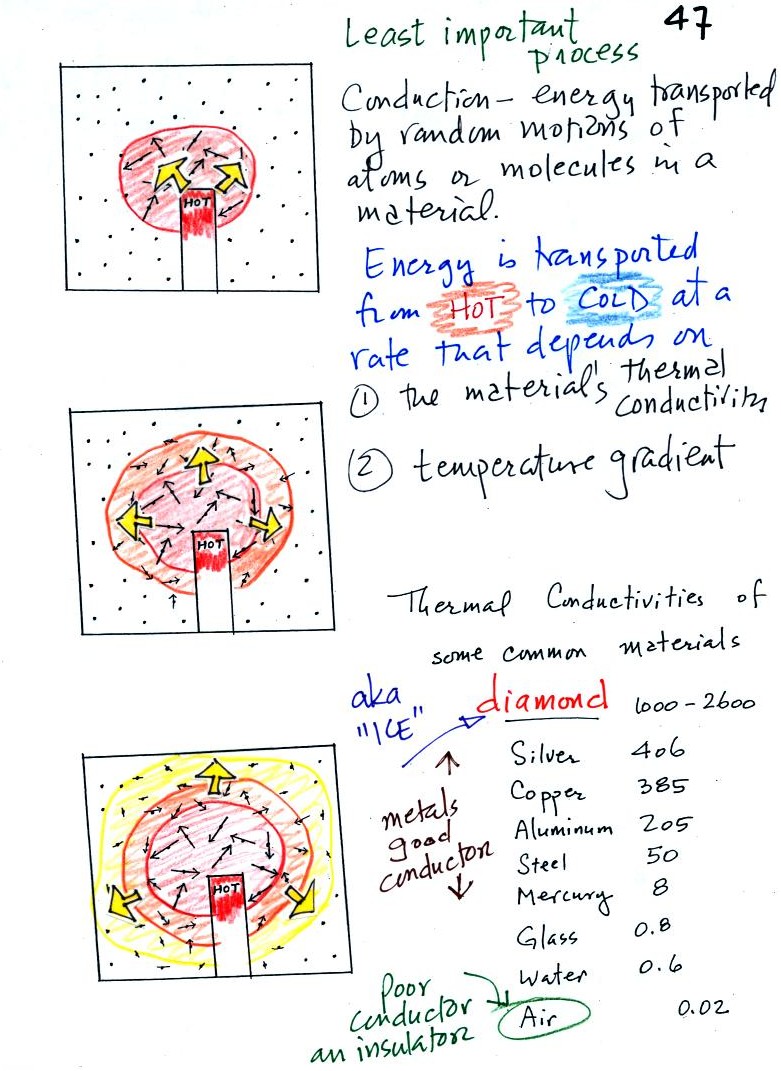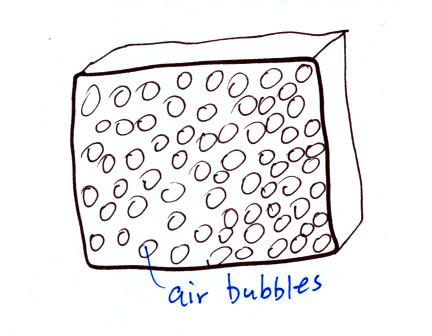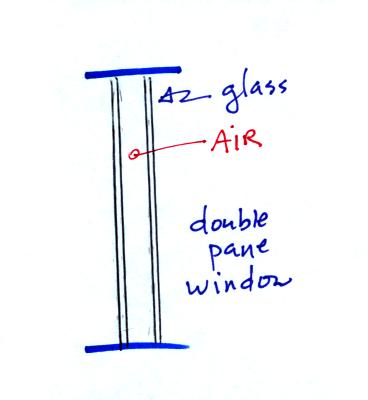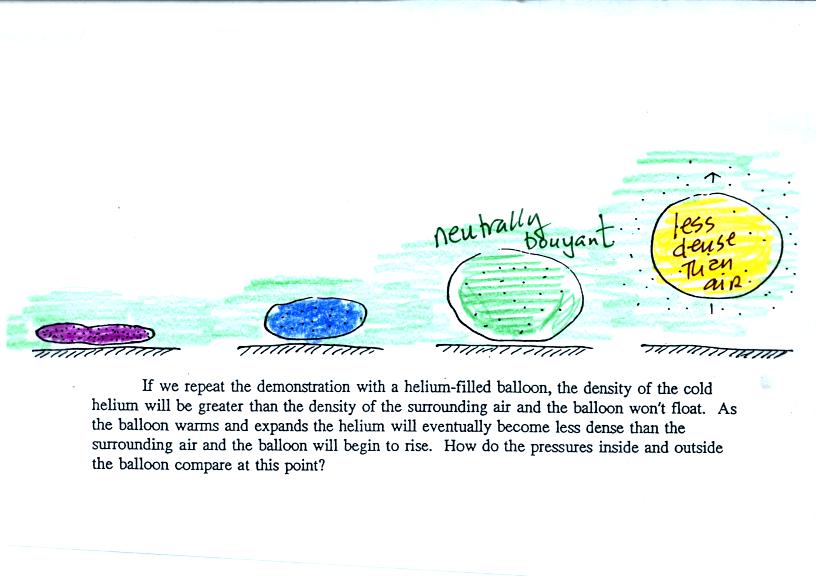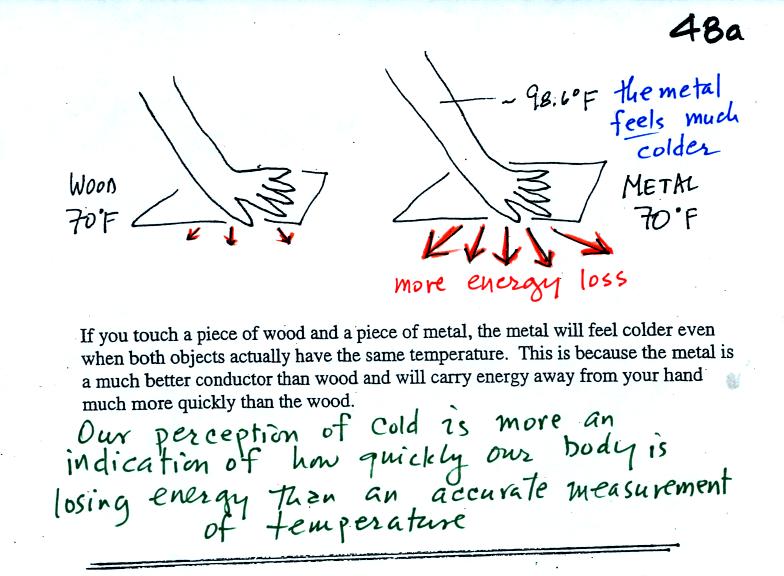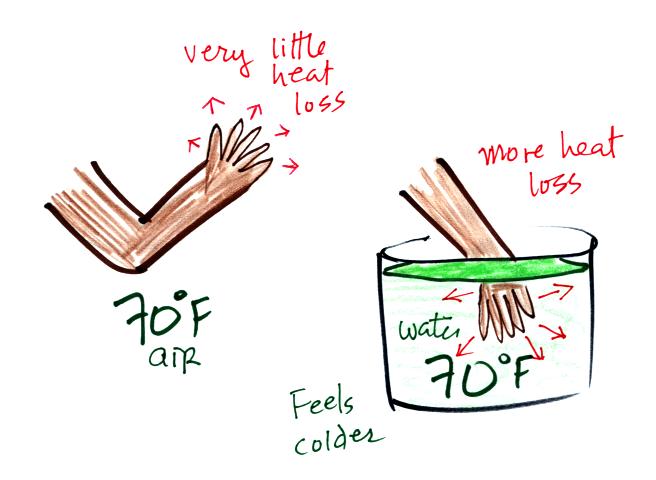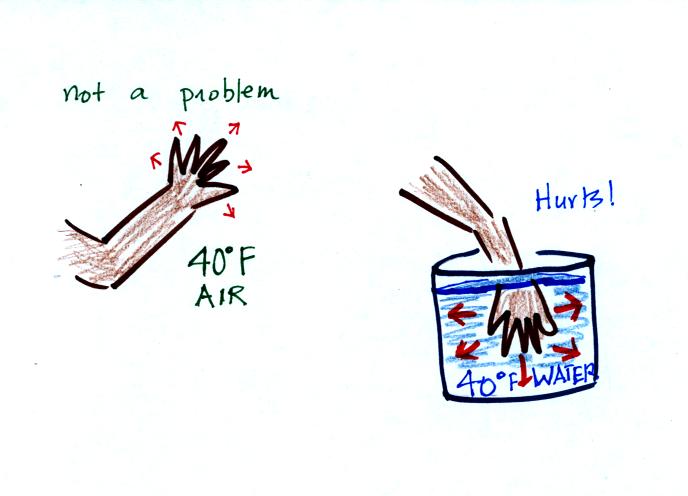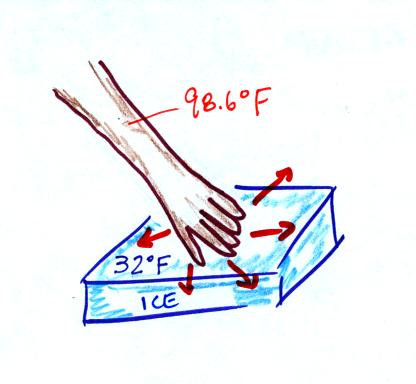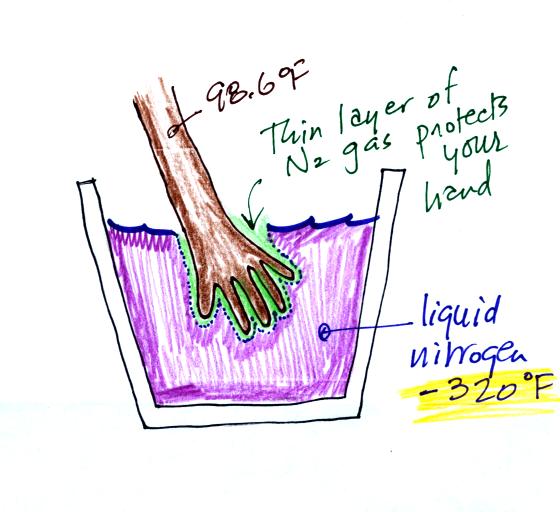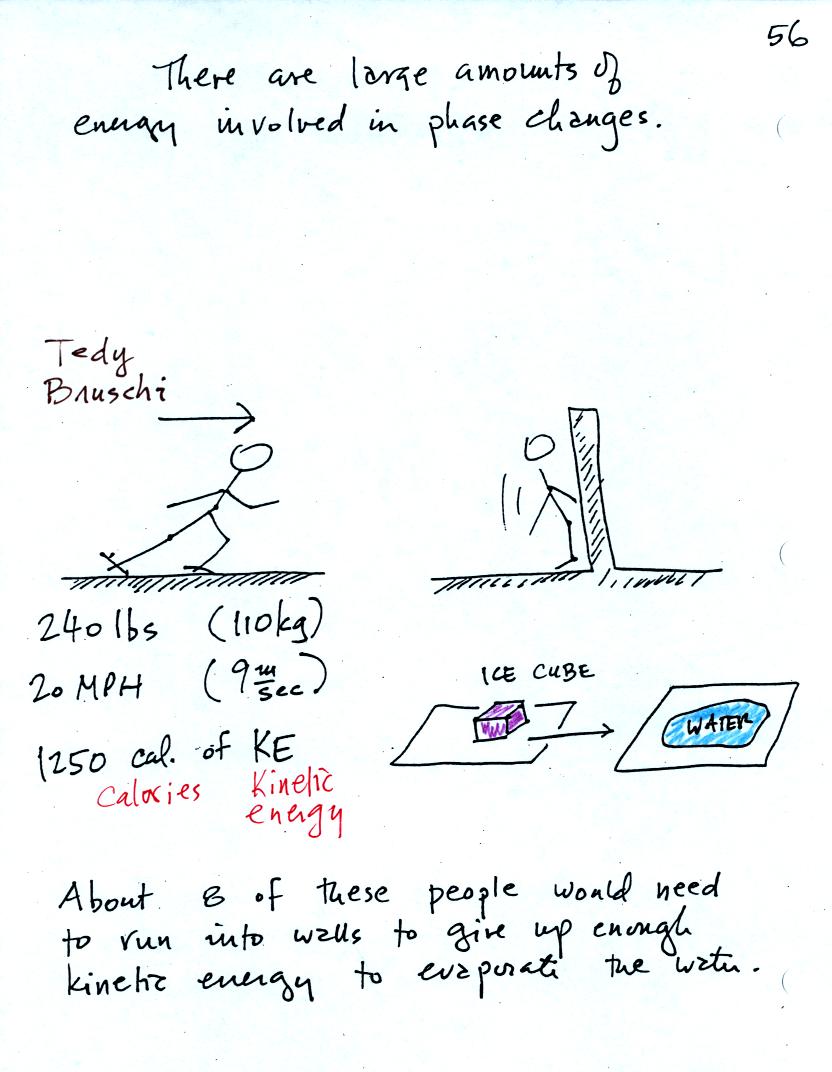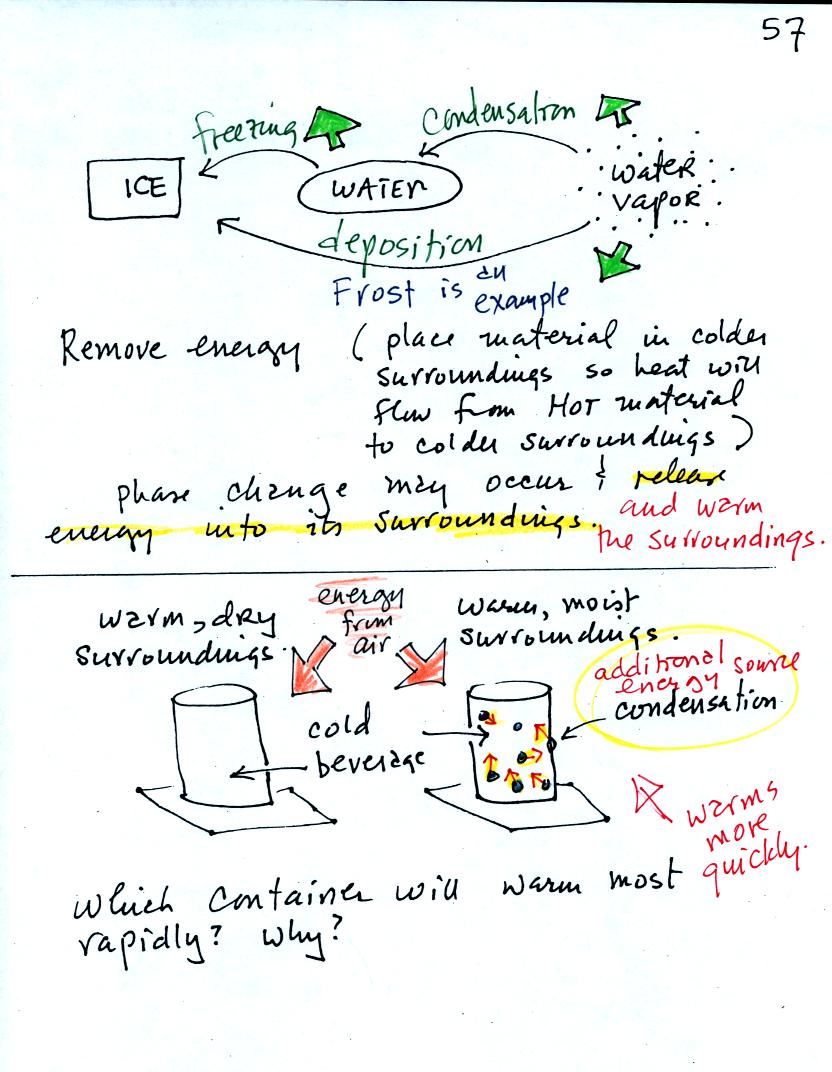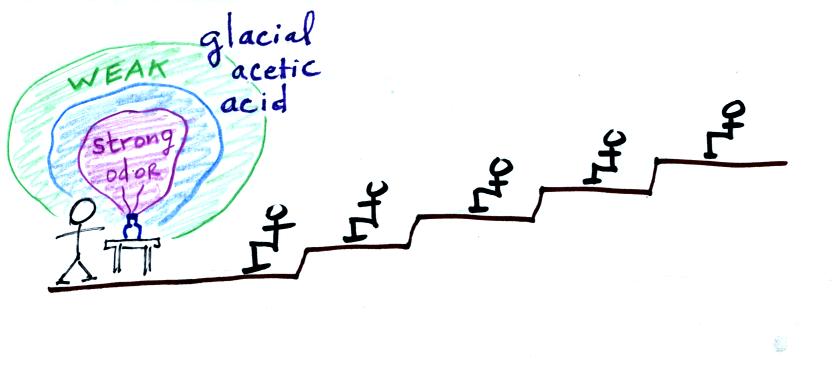
The idea was that as
the smell of the curry got into the air,
small random wind motions in the room would being to move the smell
toward the back of the room. Unfortunately the smell didn't get
very far. Maybe I'll try incense next semester.
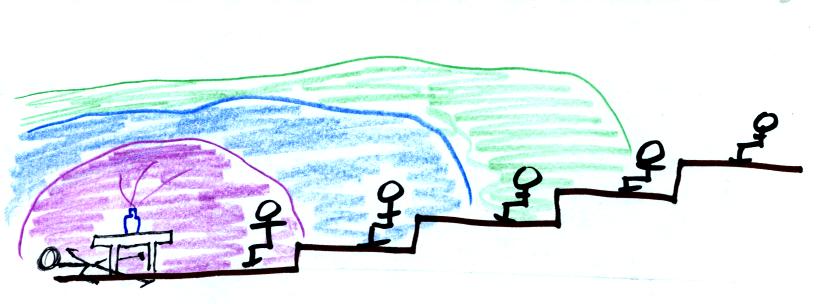
If acetic acid had been used, the
instructor and perhaps the front row
of students would have been in a little bit of trouble by this point.
Because
air has such a low thermal conductivity it is often used as an
insulator. It is important, however, to keep the air trapped in
small pockets or small volumes so that it isn't able to move and
transport energy by convection (we'll look at convection
shortly). Here are some examples of
insulators that use air:
Small bubbles of air trapped in foam
Thin insulating layer of air in a
double
pane window
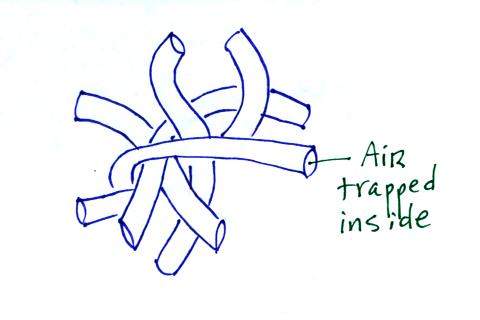 Hollow fibers (Hollofil) filled with air used in sleeping bags and
winter coats. Goose down works in a similar way
Hollow fibers (Hollofil) filled with air used in sleeping bags and
winter coats. Goose down works in a similar way
Convection
was the next energy transport process we had a look at. Rather
than moving about randomly, the atoms or molecules move as a
group. Convection works in liquids and gases but not solids.
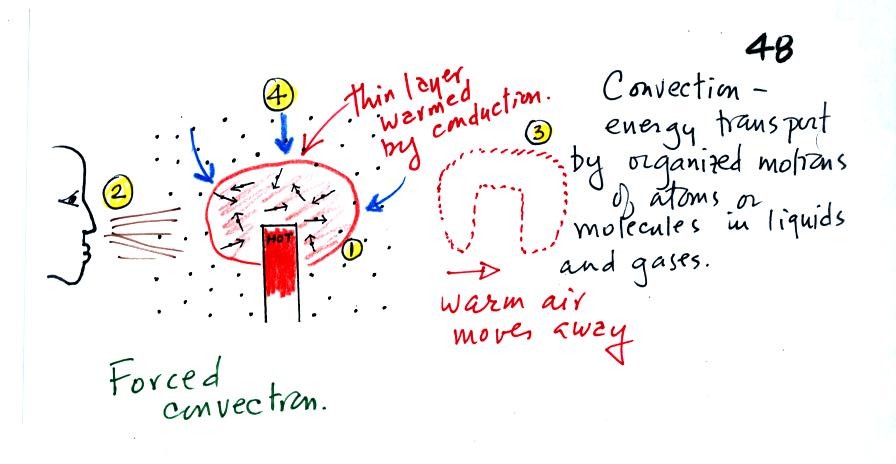
At Point 1 in the picture above a
thin layer of air
surrounding a hot object has
been
heated by conduction. Then at Point 2 a person (yes that is a drawing
of a
person's head) is blowing the blob of warm air
off to the right. The warm air molecules are moving away at Point
3 from the
hot object together as a group (that's the organized part of the
motion). At Point 4 cooler air moves in and surrounds the hot
object and the cycle can repeat itself.
This is forced
convection. If you have a hot object in your hand you could just
hold onto it and let it cool by conduction. That might take a
while because air is a poor conductor. Or you could blow on the
hot object and force it to cool more quickly. If I had put a
small fan behind the curry powder it would probably have spread the
smell further out into the classroom.
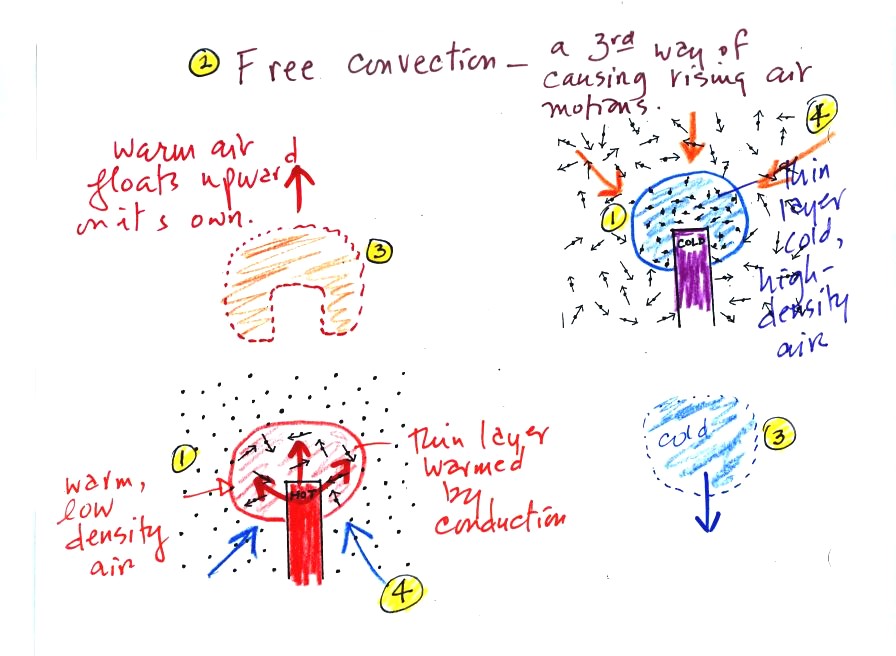
A thin layer of air at Point 1 in
the figure above (lower
left) is
heated by conduction. Then because hot air is also
low density air, it actually isn't necessary to blow on the hot object,
the
warm air will rise by itself (Point 3). Energy is being
transported away
from the hot object into the cooler surrounding air. This is
called free convection and
represents another way of causing rising air motions in the atmosphere
(rising air motions are important because rising air expands as it
moves into lower pressure surroundings and cools. If the air is
moist, clouds can form). Cooler air moves in to take the place of
the rising air at Point 4 and the process repeats itself.
The example at upper right is also free convection. The
sinking
air motions that would be found around a cold object have the effect of
transporting energy from the warm surroundings to the colder object.
In both examples of free convection energy is being transported
from
hot toward cold.
We've never really answered the question of why warm air rises and cold
air sinks. We did that next. This is covered on p. 53 in
the photocopied ClassNotes.
The air parcel shown in the top figure below has
the same
temperature, pressure, and density as the air around it. Under
these conditions there's no reason for the air to rise or sink, the
parcel
will remain stationary, it is neutrally bouyant.

Air has mass weight, so gravity is
pulling downward on the balloon of
air (middle picture). The strength of the gravity pull (the
weight) depends on the amount of air inside the balloon.
There must be an upward force of the same strength in order for
the
balloon to remain stationary. The origin of this force is the
pressure of the air surrounding the balloon. Because air pressure
decreases with increasing altitude, the forces at the top of the
balloon (pushing down) are a little weaker than the forces at the
bottom (pushing up). The net result is an upward pointing
pressure difference force. The strength of this force is
determined by the air surrounding the balloon.

Now we compare the
forces on the neutrally bouyant balloon (the green one at left) with
balloons that are filled with warm low density and cold high density
air.
If the balloon is filled with warm, low
density air the gravity force
will weaken (there is less air in the balloon so it weighs less). The
upward pressure difference force (which depends on the
surrounding air) will not change. The upward force will be
stronger than the downward force and the balloon will rise.
Conversely if a balloon is filled with cold high density air, the
balloon gets heavier. The upward pressure difference force
doesn't change. The net force is now downward and the balloon
will sink.
To demonstrate free convection we modified the Charles Law
demonstration that we did a week or two ago. We used
balloons filled with hydrogen instead of air (see bottom of p. 54 in
the photocopied Class
Notes). Hydrogen is less dense than air even when the
hydrogen has the same temperature as the surrounding air. A
hhydrogen-filled balloon doesn't need to warmed up in order to rise.
We dunked the helium-filled balloon
in some liquid nitrogen to cool
it
and to cause the density of the helium to increase. When
removed
from the liquid nitrogen the balloon didn't rise, the gas inside was
denser than the surrounding air (the purple and blue balloons in the
figure above). As the balloon warms and expands
its density decreases. The balloon at some point has the same
density as the air around it (green above) and is neutrally
bouyant. Eventually the balloon becomes less dense that the
surrounding air (yellow) and floats up to the ceiling.
Latent heat energy transport is associated with changes of
phase (solid to liquid, water to water vapor, that sort of thing) A
solid to liquid phase change is melting, liquid to gas is
evaporation, and sublimation is a solid to gas phase change (dry ice
sublimates when placed in a warm room, it turns directly from solid
carbon dioxide to gaseous carbon dioxide).
In
each case energy must be added to the material changing phase.
You can consciously add or supply the energy (such as when you put
water in a
pan and put the pan on a hot stove) or the needed energy will be
taken from the surroundings (from your body when you step out of a
shower in the morning).
A 240 pound man (or woman) running
at 20 MPH has just enough
kinetic energy (if you could somehow capture it) to
be able to melt an ordinary ice cube. It would take 8 people to
evaporate the resulting water.
You can consciously remove energy
from water vapor to make
it
condense
or from water to cause it to free (you could put water in a
freezer; energy would flow from the relatively warm water to the
colder surroundings). Or if one of these phase
changes occurs energy will be released into the surroundings (causing
the surroundings to warm). Note the energy arrows have
turned around and are pointing from the material toward the
surroundings.
A can of cold drink will warm more quickly in warm moist
surroundings
than in warm dry surroundings. Heat will flow from the warm air
into the cold cans in both cases. Condensation of water vapor is
an additional source of energy and will warm that can more
rapidly. The condensation may actually be the dominant process.
The story starts at left in the
tropics where there is often an abundance or surplus of energy;
sunlight
evaporates ocean water. The resulting water vapor moves somewhere
else and carries hidden latent heat energy with it. This hidden energy
reappears when something (air running into a mountain and rising,
expanding, and cooling) causes the water vapor to condense. The
condensation releases energy into the surrounding atmosphere.
Energy arriving in sunlight in the tropics could ultimately be
transported to the atmosphere in Tucson.
